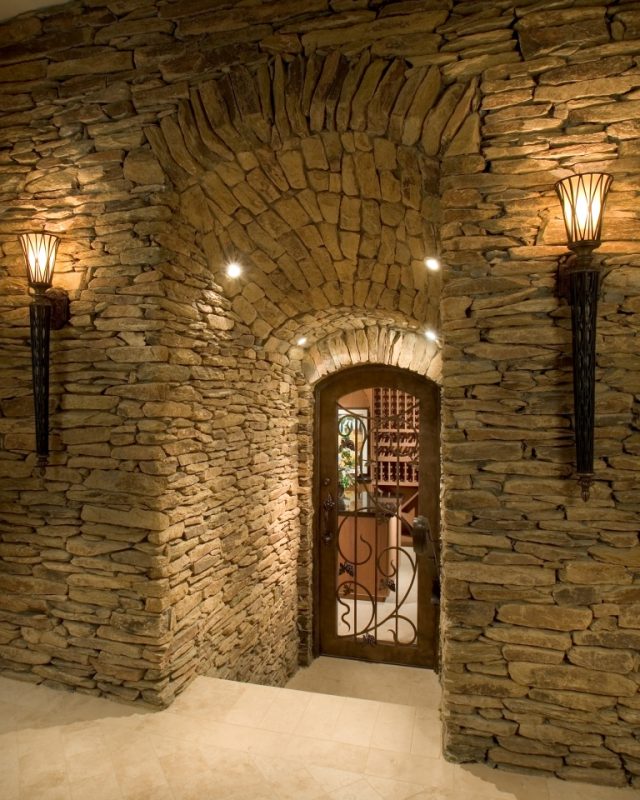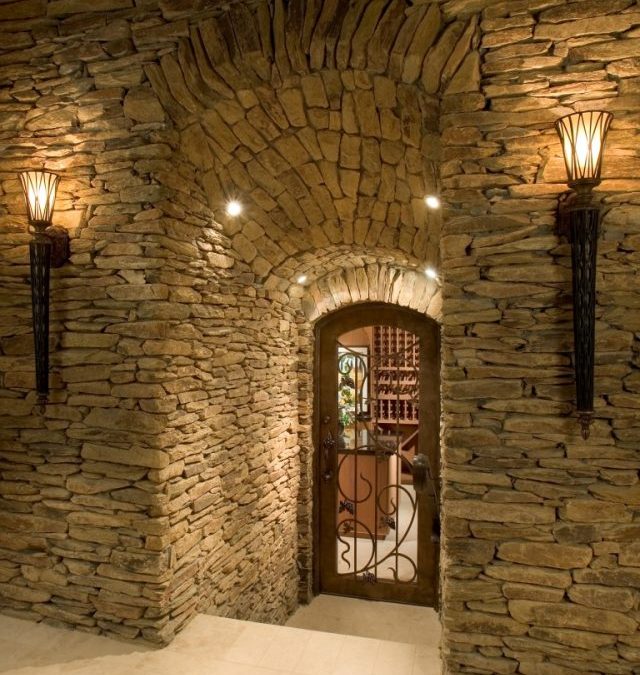I recently traveled to Ciudad Obregon, Mexico to work on a client project. One of the first things I noticed when I arrived at the home after my evening flight was that in spite of its grandeur, the home seemed dark and uninviting due to its lack of sufficient lighting. The ceilings were very high, and the light seemed to just get lost in the space; there was nothing for the eye to land on and focus on. While there were many beautiful details in the home such as elaborately carved wood and stone, they were hardly noticeable because the lighting was so dull. The other problem was that the color of the lighting was different in different fixtures. So one light would seem to be “pinkish” and another “yellowish” and another more of a bright white. The mixture was unsettling, to say the least!
Luckily, my client understood the situation when we discussed it, and we are hiring a lighting consultant to specify the correct bulbs throughout her home, which will create an incredible transformation! This lead me to think of the utmost importance of lighting in our homes and workplaces. If not properly lit, even beautifully designed interior spaces disappear as soon as the sun sets. Lighting should be an integral part of any interior design project from the very beginning. Selecting lighting that complements the space can bring chosen design elements to life and create a warm, welcoming mood for family and guests.
There are several ways that lighting works as a facet of interior design:

Notice how the lighting is coming primarily from the side and from a soft glow in the ceiling in this dining space? While sitting at the table you will not have light hitting the top of your head, which is highly unflattering! For a dinner party, a selection of candles on the table would provide perfect lighting.
Space. Lighting can play a role in creating the illusion of space, or lack thereof, in a room. The placement of the light can either make the space look bigger or smaller, wider or narrower, etc. For example, a centrally placed ceiling light can illuminate the entire room in a way a corner floor lamp could not. Wall lights can not only light a hallway during the night, but make it appear elongated through the placement of the lights on the walls.
Color. In addition to affecting the size and shape of a space, good lighting can be used to enhance colors within a design. During the day, sunlight will naturally illuminate a room and showcase the color selection. Darker colors, especially when used on walls, can make a space seem smaller than it really is. Past dusk, the placement and type of lighting used can affect how light or dark a colored section can appear. When selecting colors in the design phase, it might be beneficial to test colors using different lighting types. Depending on the type of bulb, the light emitted may be a warm or cool color and would affect the overall feel of of the room. And it’s important that all of the lighting in the room be complimentary in color to avoid the situation I described above, where the bulbs are emitting different, competing colors of light.

Powder rooms can be dramatic spaces. Here, a homeowner has chosen to direct spot lighting at the countertop, creating interesting pools of light. However, I don’t feel the lighting is focused in appropriate places, and the indirect lighting in the ceiling should have come from LED tape lighting, which would have created an even glow.
Mood. The way a space is lit effects the feeling you have while in that room. I find that I am much calmer in a space that is lit indirectly; in other words, the walls and certain art and architectural features are illuminated….not the top of my head! The worst mistake people make when trying to do their own lighting plan, is to put a half dozen recessed lights in the ceiling of a room because they think that will take care of all their lighting needs. Yes, you will be able to see to sweep the floor at night (if you are into cleaning in the evening!), but the quality of light will be dull and it will make you and your friends look haggard. Light should softly glow onto your face from beside you, not bathe you in light from the top.
Enhancing design elements. Decorative lighting is frequently used to highlight the beauty of chosen design elements within a space. A common example of this is the use of light on a wall painting. During the day, the painting’s colors are vivid and clear due to natural sunlight. At night, lighting is used to illuminate the painting for viewing and to keep it from disappearing into the shadows of the wall. It’s important to make sure light is being cast on design features or decor that you want visible and enjoyed with or without natural sunlight. Lighting can also be used to change the mood of a space. A bright, spacious room by day can be transformed into a relaxing, cozy living space at night through the use of strategic lighting.

In this powder room, we chose to tuck the lighting up into channels above the vanity surface to create an appealing glow whose light source is hidden from the viewer.
Light bulb choices. While there are hundreds of different styles of lighting fixtures, the actual light bulb is something to take into account when selecting lighting for your interior design project. Recently you’ve undoubtedly heard talk of a ban on the traditional incandescent light bulb. That isn’t exactly true; they have dropped certain watt bulbs and issued more efficient alternatives. However, the wave of the future is definitely LED (light-emitting diode) lighting, because of the fact that LED bulbs burn far less energy than the incandescent and are far more controllable and visually appealing than compact fluorescent bulbs. (If you still have any of those ugly fluorescent bulbs in your home, I suggest you rob the piggy bank and replace them asap!) LED lights are also cool to the touch and don’t contribute to increased heat in your home.
The downside of the new LED lighting is that it is still in the beginning stages of development and is changing daily (a little like all technology these days!). Even lighting consultants are having to work overtime to try to stay on top of the changes and the new offerings companies like Philips, GE and Cree are putting out every month. So don’t think you can just go to Home Depot and grab a bulb that is the equivalent of your old incandescent bulb in lumens, and automatically have a similar effect.

The soft glow of the lighting on these stone walls creates an inviting space.
At the end of the day, lighting selection is a invaluable tool in designing your ideal space. I’m not even going to try to get into a tutorial on how to select the right LED bulb for a given application here, because it’s a huge topic.
Suffice to say, it may take a little “trial and error” to achieve the result you are looking for. More sophisticated electricians are trying to keep up with the LED technology now, but most I’ve worked with honestly are still beginners. At this point in time, only professional lighting consultants know what they’re doing when it comes to all of the options in LED lighting. I’m sure as time goes on, it will all settle down and there will be more dependable standards to make the process simpler.
I can’t stress the importance of paying attention to how your home is lit, because in the evening, a poorly lit room is an ugly room. Why spend the money on beautiful furnishings and art that can’t be appreciated at night when you are relaxing with friends and family?


